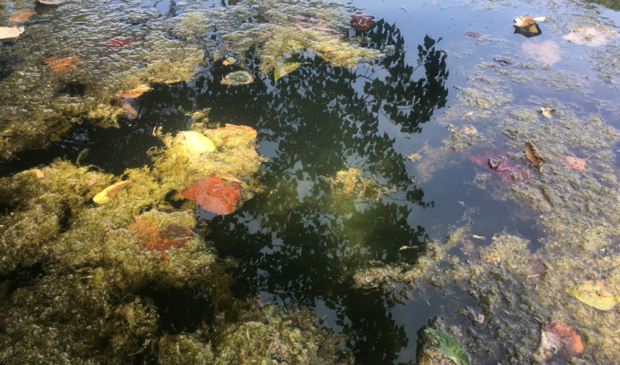With winter coming, city works on treatment for toxic blue-green algae
Thursday, November 19, 2020 by
Tara Phipps The Water Oversight Committee met the last week of October to hear an update on the toxic algae that resulted in the deaths of at least five dogs in Austin last year.
Brent Bellinger, a research ecologist with the Watershed Protection Department, informed the committee about the harmful algae in Lady Bird Lake and how the city’s preventive measures have helped keep animals safe this year.
“We saw the toxins did come back, but because of our effective messaging and signage, we did not have any reports of dog deaths this year,” Bellinger said.
The department has largely relied on educational signage near the water to create awareness of the risks, Bellinger added, as well as pushing information out through social media. The city has also been monitoring the algae bloom.
This is the second year the toxic algae has emerged. The algae is seasonal, growing mostly in the summer months, and dying back in the winter. Bellinger said the department plans to create a more comprehensive monitoring program of the algae this winter in anticipation of its resurgence next summer.
The toxic blue-green algae predominantly sickened dogs who swam in the water at Red Bud Isle and Auditorium Shores. The risk to humans is low.
“We can spend the winter now developing some better models,” Bellinger said, “so that we can finally start to explore and hopefully implement some treatment options.”
The department has found three main factors created an environment allowing the algae in Lady Bird Lake to go from benign to toxic: low water flow due to drought periods; very warm water temperatures; and most importantly, a significant increase in nutrients such as ammonia and phosphorous.
“Our treatment option that we’re exploring is going after that third and most important driver of the toxic algae bloom,” Bellinger said. “And that’s the nutrients.”
The treatment would essentially starve the algae by eliminating the phosphorous nutrients.
Beyond that, the department is looking at physical ways to remove the algae, although Bellinger noted that is only a temporary fix.
Currently, Lady Bird Lake is at high risk for toxins, so the city recommends that owners keep dogs away from the lake. Watershed suggests that dog owners avoid areas where algae buildup is noticeable, rinse dogs immediately after being in the water, and if they become sick, take the dog to a vet immediately.
This story was written by a journalism student at the University of Texas at Austin. The Austin Monitor is working in partnership with the UT School of Journalism to teach and publish stories produced by students in the City and County Government Reporting course.
The Austin Monitor’s work is made possible by donations from the community. Though our reporting covers donors from time to time, we are careful to keep business and editorial efforts separate while maintaining transparency. A complete list of donors is available here, and our code of ethics is explained here.
You're a community leader
And we’re honored you look to us for serious, in-depth news. You know a strong community needs local and dedicated watchdog reporting. We’re here for you and that won’t change. Now will you take the powerful next step and support our nonprofit news organization?








